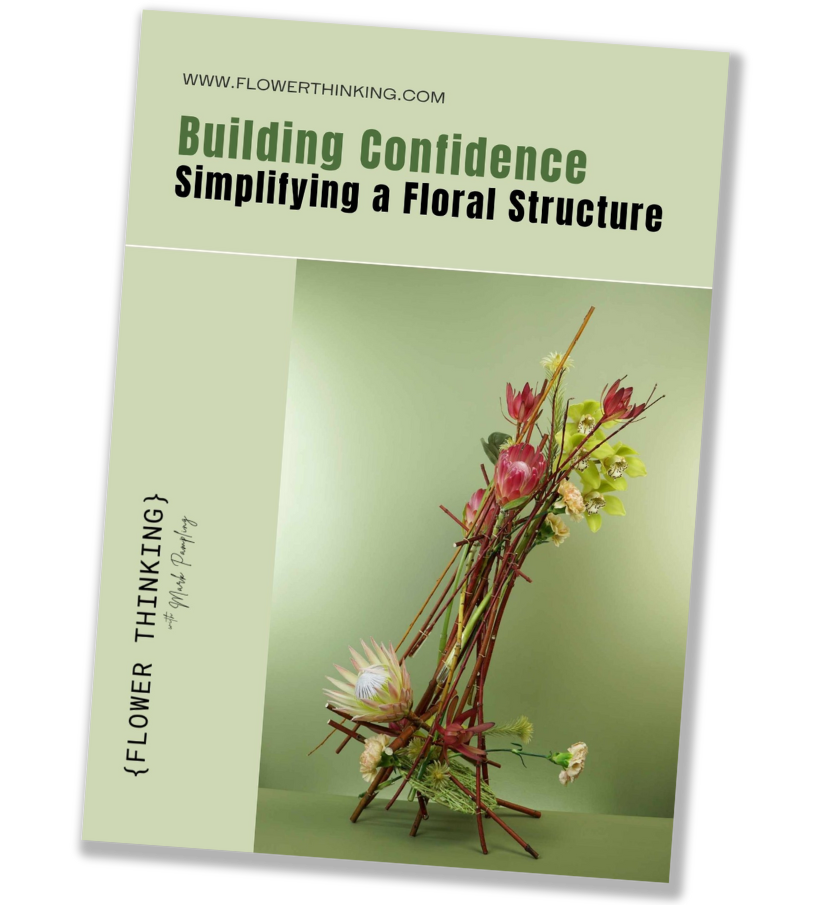Great floral arrangement calls for the right skills and a good combination of materials and it also helps to have the right tools, and keep them well maintained. Keeping the right tools on hand not only facilitates better work, it’s also better for your physical health and for the materials you’re working with.

Creating a floral arrangement invariably involves cutting and trimming the materials to suit the composition. The right tools, in good condition, help you achieve cleaner, more precise work, more quickly, with less wear on you. No bride wants the ribbon ends on their bouquet to be jagged and fraying.
Task appropriate tools are easier on your hands, and save you from the aches of overuse and long term injury. Inadequate tools lead to conditions like muscle stress and fatigue, repetitive strain injury and carpal tunnel syndrome. Larger stems need stronger, larger blades, so always defer to your secateurs when faced with a thicker stem.
Using the wrong tools can damage your plant materials, reducing their vase life. Snips that are blunt or too heavy can crush stems, reducing their capacity for water uptake and general hydration.
Good quality, well maintained tools are an asset to your practice. Scissors with high quality metal will keep their edge and stay sharp for longer.
If we narrow it down to the essentials you need for everyday designing, here are our recommendations – the ones we always pack and take to each project.

- Flower Scissors - The number one go-to in your toolbox. Good flower scissors will cut through the majority of materials that come across your path - most of the regular soft stem materials, around 8mm and under. We recommend and use Chikamasa scissors with their carbon steel blades, which hold their cutting edge and come in multiple sizes to fit your hands (medium and large) or for fine, delicate work (small). Unlike regular flower scissors, the Chikamasa carbon steel blades stand up to light wire cutting duty and stay sharp (within reason!).
- Ribbon Scissors - Long straight blade scissors are an absolute minimum to ensure a good finish and smart presentation for all wraps, ribbons and cords. Keep a sharp, clean pair on hand at all times to ensure a professional finish every time. We like these ones.
- Secateurs - thick and woody stems require larger, strong blades for clean cut-through. They also take the strain off your hands and wrists. If you're working with small branches, Protea, Banksia and larger tropicals, for example, a good pair of secateurs is indispensable. Again, we use Chikamasa secateurs, which are sturdy and easily cut thicker stems while staying sharp in the long term.
- Florist’s Knife - Nothing gives a cleaner cut than a sharp florists' knife.There are flat and curved blade options - we recommend the flat blade variety for the most versatility. Your knife can also double up as a fast Rose dethorner and foliage remover for longer stems with lots of fleshy leaves, such as Snapdragons and Stocks. Smithers-Oasis supplies a very affordable disposable knife (which can also be resharpened many times for a long service life).
- Small Pliers - Achieving strong, precise binds in wire work is a lot easier with hand-sized, flat nose pliers. They enable you to easily access a wire twist close to the base and to produce a tighter, strong bind. Ones like these work well.
- Wire Cutters - Nothing ruins your scissors and secateurs faster than cutting wires. Even though those wires seem thin and harmless, they’ll damage your blades with small nicks or large indentations that cannot be restored. Sturdy pliers with a cutting edge, like those from German manufacturer Knipex, are worth the investment and will last for many years.
Tip - Always use the right tool for the job. Don’t use your ribbon scissors to snip stems, or your flower scissors to cut wire, just because they are closer at hand! If you look after your tools, they’ll look after you.
We're glad we could help you with your questions; What are the basic tools used in floral design? Let us know if you have any more questions about professional floristry tools and your floral design toolkit.
Pack our six essential tools in your kit, along with your design chops and technical skills, and you’ll be ready for design success every time.

If you're ready for the next step in your floral design journey, find out more about our online workshops.
Following us? Find us on Instagram or Facebook, and sign up to our mailing list to be the first to hear about new workshops which book out so fast!


